Time:2025-07-07
The Rise of Flexible Neon Strips in Modern Lighting
In the dynamic landscape of contemporary lighting design, flexible neon strips have emerged as a revolutionary force, redefining the boundaries of what is possible in illuminated spaces. Unlike traditional rigid neon tubes, these innovative strips combine the classic allure of neon lighting with enhanced flexibility, opening up a world of creative possibilities for designers, businesses, and homeowners alike. The ability to bend, curve, and conform to various surfaces makes flexible neon strips a versatile choice for a wide range of applications, from architectural accents and commercial signage to interior decor and event installations. As the demand for unique, customizable, and visually striking lighting solutions continues to grow, flexible neon strips have become an essential tool for creating captivating and immersive environments.
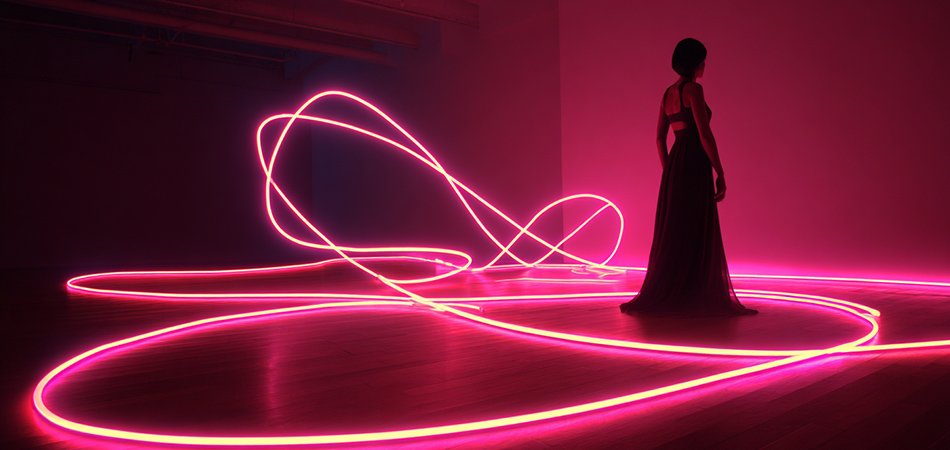
Technical Breakdown: How Flexible Neon Strips Work
The functionality of flexible neon strips is rooted in their advanced technical design. At the core, these strips feature a series of LED diodes or, in some cases, specialized neon gas - filled channels encased within a durable, flexible material. For LED - based flexible neon strips, the LED chips are typically mounted on a flexible printed circuit board (PCB). This PCB serves as the electrical pathway, allowing for the transmission of power to each individual LED.
The outer sheath of the strip is often made from materials such as silicone or PVC. Silicone sheaths are highly prized for their excellent flexibility, durability, and resistance to environmental factors like UV radiation, moisture, and temperature fluctuations. PVC sheaths, on the other hand, offer a more cost - effective option while still providing a good level of protection and flexibility.
In the case of neon gas - filled flexible strips, the gas is contained within a bendable glass or plastic tube. The gas, when electrically charged, emits a characteristic glow, which can be customized in terms of color depending on the type of gas used. These strips are designed to withstand bending without compromising the integrity of the gas - filled channels or the electrical connections.
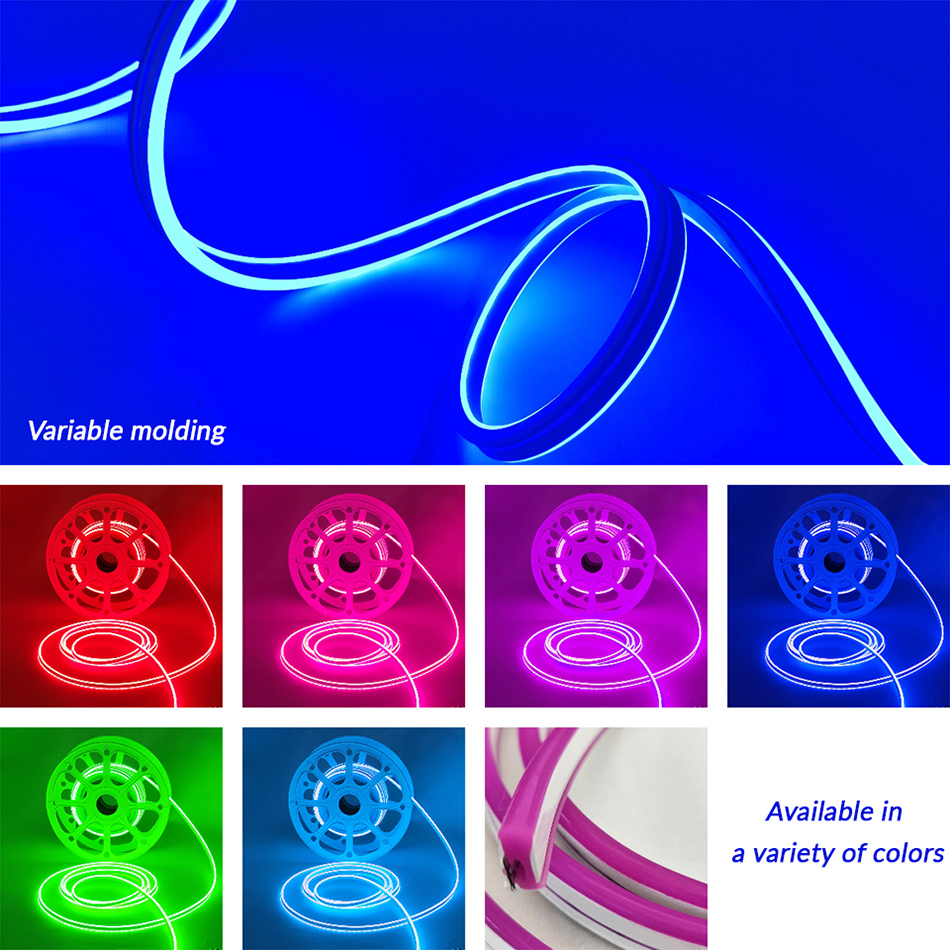
Design Flexibility: Unleashing Creativity
One of the most significant advantages of flexible neon strips is their unparalleled design flexibility. They can be easily shaped to fit around curved surfaces, such as columns, arches, or furniture with rounded edges. This adaptability allows designers to create organic and flowing lighting patterns that add a sense of movement and dynamism to any space.
For architectural applications, flexible neon strips can be used to outline the contours of a building's facade, highlighting its unique features and creating a striking nighttime presence. In interior design, they can be installed along the edges of shelves, cabinets, or ceilings to provide subtle accent lighting or to create a focal point. Additionally, the strips can be cut to specific lengths at designated intervals, enabling the creation of custom - sized lighting installations to suit any project requirements.
The color options available for flexible neon strips are also extensive. LED - based strips can produce a wide range of colors, from vibrant primaries to soft pastels, and can even be programmed to create color - changing effects, gradients, and animations. Neon gas - filled strips offer a more limited but still diverse palette of classic neon colors, each with its own distinct aesthetic appeal.
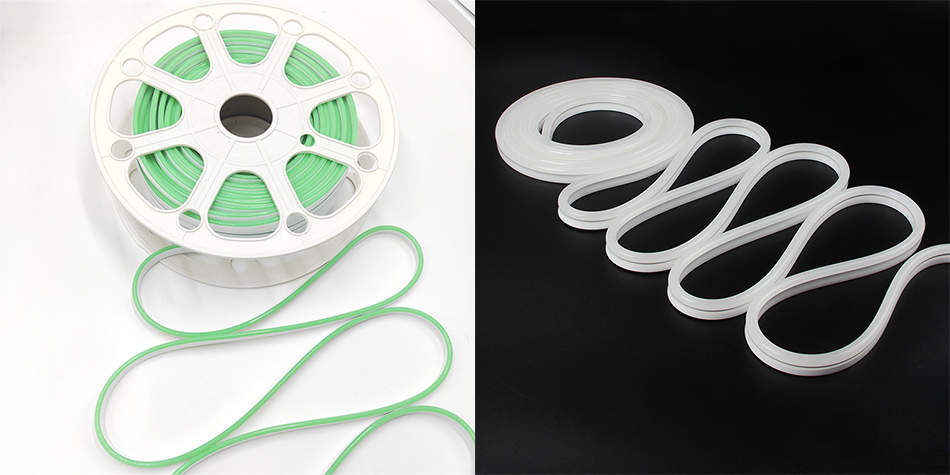
Diverse Applications Across Industries
Flexible neon strips have found widespread use across various industries, each leveraging their unique properties to enhance the user experience and achieve specific goals:
Commercial Spaces: In retail stores, flexible neon strips are used to create eye - catching window displays, highlight product features, and reinforce brand identities. Restaurants and bars utilize them to set the mood, with warm - toned strips creating a cozy and inviting atmosphere, while cooler tones can add a modern and sophisticated touch. In offices, they can be employed to provide task lighting or to add a touch of creativity to the workspace.
Residential Interiors: Homeowners are increasingly incorporating flexible neon strips into their decor to add a personal and stylish element. They can be installed behind televisions or mirrors to create a soft, ambient glow, or used to accentuate architectural details such as crown moldings or staircases. In children's rooms, colorful neon strips can bring a playful and imaginative touch to the space.
Events and Exhibitions: At weddings, parties, and corporate events, flexible neon strips are used to create stunning backdrops, illuminate dance floors, and enhance the overall event theme. Exhibition booths can use these strips to stand out from the crowd, with dynamic lighting displays that attract visitors and showcase products in the best possible light.
Architectural and Landscape Design: Architects and landscape designers use flexible neon strips to enhance the visual appeal of buildings and outdoor spaces. They can be used to light up pathways, gardens, and water features, creating a magical and enchanting atmosphere after dark. On building exteriors, the strips can be used to create unique lighting patterns that transform the building's appearance and make it a landmark in the area.
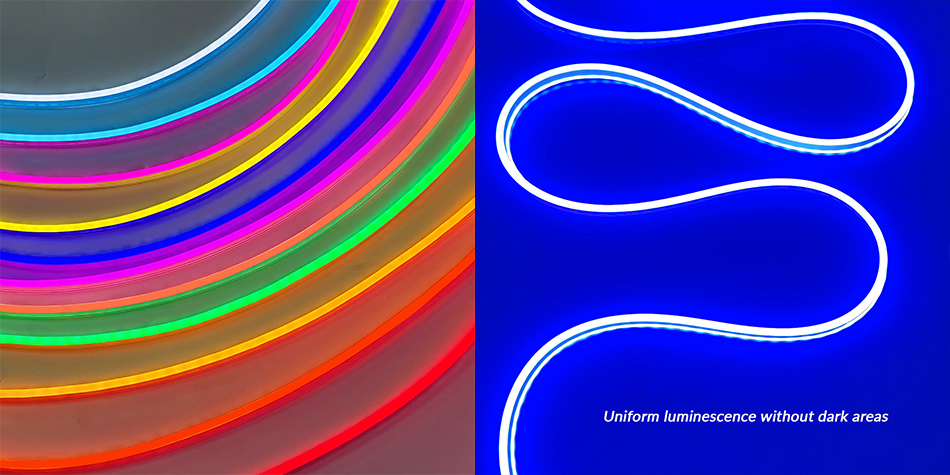
Installation and Maintenance: A User - Friendly Approach
Installing flexible neon strips is a relatively straightforward process, even for those with limited technical expertise. Many strips come with self - adhesive backing, allowing them to be easily attached to clean, smooth surfaces. For more secure installations or on rougher surfaces, mounting clips or brackets can be used.
Electrical connections are also designed to be user - friendly. LED - based strips typically operate at low voltages, which not only enhances safety but also simplifies the power supply requirements. They can be connected to a power adapter or a dimmer switch, depending on the desired functionality.
Maintenance of flexible neon strips is minimal. Regular cleaning with a soft, dry cloth is usually sufficient to remove dust and debris, ensuring optimal light output. LED - based strips have a long lifespan, reducing the need for frequent replacements. In the case of neon gas - filled strips, although they may require more careful handling due to the presence of gas, their durability means they can provide reliable lighting for an extended period.
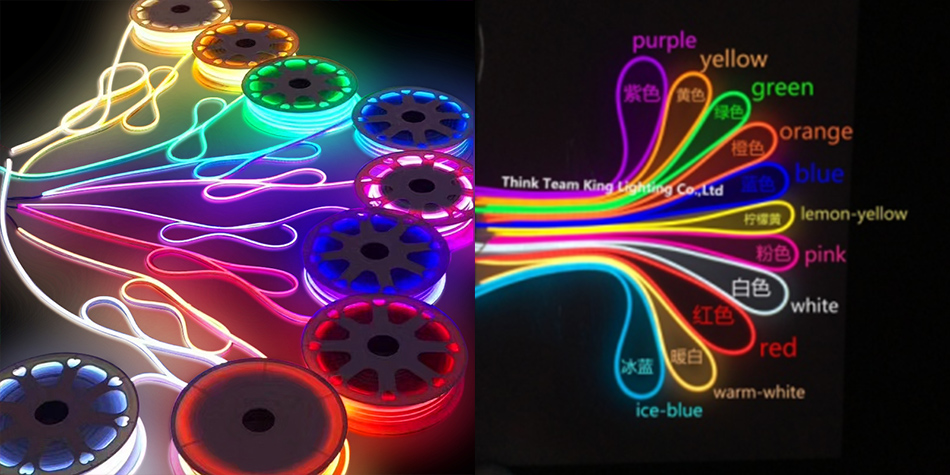
Advantages over Traditional Lighting Solutions
Flexible neon strips offer several distinct advantages over traditional lighting options:
Versatility: Their ability to bend and conform to different shapes and surfaces makes them suitable for a much wider range of applications compared to rigid lighting fixtures. This versatility allows for more creative and unique lighting designs.
Energy Efficiency: LED - based flexible neon strips consume significantly less energy than traditional incandescent or fluorescent lighting. This not only helps to reduce electricity bills but also makes them a more environmentally friendly choice.
Customization: With a wide range of colors, lengths, and lighting effects available, flexible neon strips can be customized to meet the specific needs and preferences of any project. This level of customization is often not possible with traditional lighting solutions.
Aesthetic Appeal: The soft, glowing light emitted by flexible neon strips creates a warm and inviting atmosphere, which is highly desirable in many settings. Their unique aesthetic can enhance the overall look and feel of a space, making it more visually appealing.
Innovations and Future Trends
The field of flexible neon strips is constantly evolving, driven by technological advancements and changing consumer demands. One of the key trends is the integration of smart technology. Many modern flexible neon strips now come with built - in Bluetooth or Wi - Fi connectivity, allowing users to control the lighting via a mobile app. This enables features such as remote on/off, color changing, and the creation of custom lighting scenes.
Another area of innovation is in the development of more sustainable materials. Manufacturers are increasingly exploring the use of recycled and eco - friendly materials for the sheaths and components of flexible neon strips, reducing their environmental impact.
Advancements in LED technology are also leading to brighter, more efficient, and more color - accurate flexible neon strips. Additionally, the development of new manufacturing techniques is making it possible to produce strips with even greater flexibility and durability, opening up new possibilities for design and installation.
Selecting the Right Flexible Neon Strip Provider
When choosing a provider for flexible neon strips, it is important to consider several factors. Firstly, look for a company with a good reputation for quality and reliability. Read customer reviews and testimonials to get an idea of the experiences of other buyers.
Secondly, consider the range of products offered. A good provider should offer a wide variety of strip lengths, colors, and types (LED - based or neon gas - filled) to meet different project requirements. They should also be able to provide customization options if needed.
Technical support is another crucial aspect. Ensure that the provider offers comprehensive technical support, including installation guides, troubleshooting assistance, and after - sales service. This will ensure that you have a smooth experience from the purchase to the installation and operation of the flexible neon strips.
Finally, compare prices from different providers, but do not compromise on quality for the sake of a lower price. Remember that investing in high - quality flexible neon strips will ensure better performance, durability, and a more satisfying lighting experience in the long run.
Flexible neon strips have truly revolutionized the world of lighting design, offering a combination of versatility, functionality, and aesthetic appeal that is unmatched by traditional lighting solutions. As technology continues to advance and new trends emerge, these strips are set to play an even more significant role in shaping the illuminated spaces of the future. Whether it's for commercial, residential, or public applications, flexible neon strips provide endless opportunities to create unique, captivating, and memorable lighting environments.